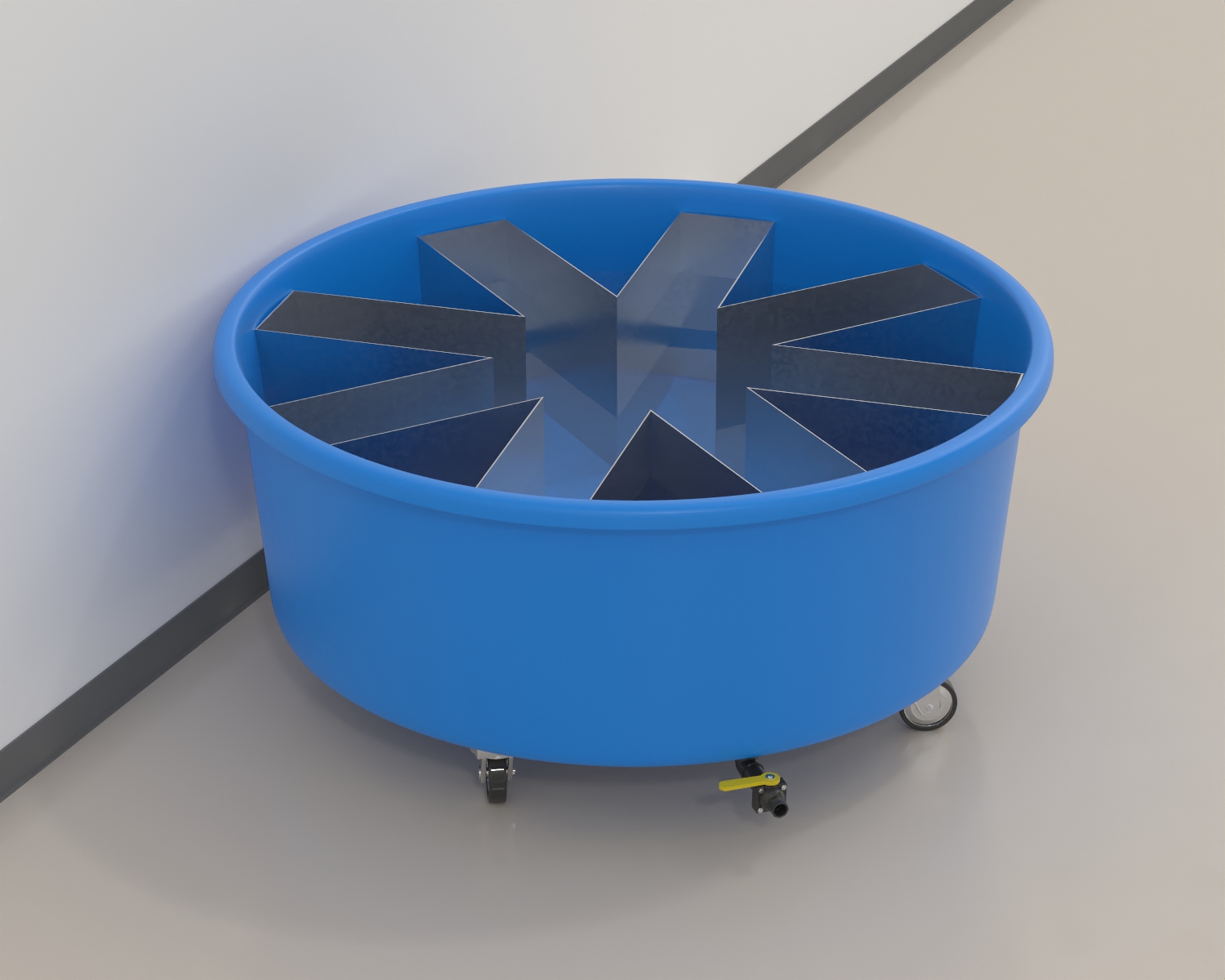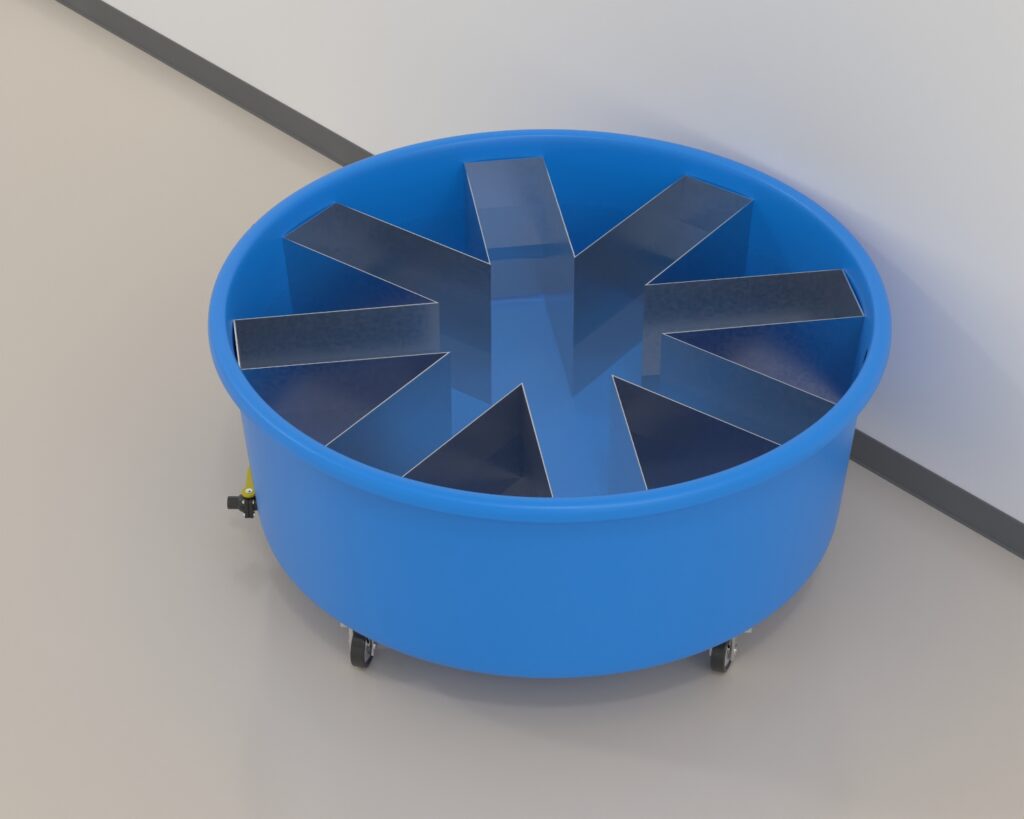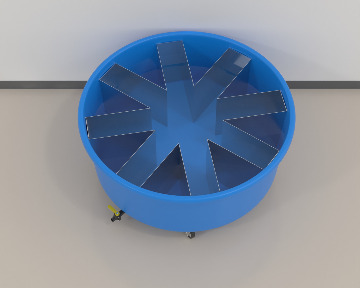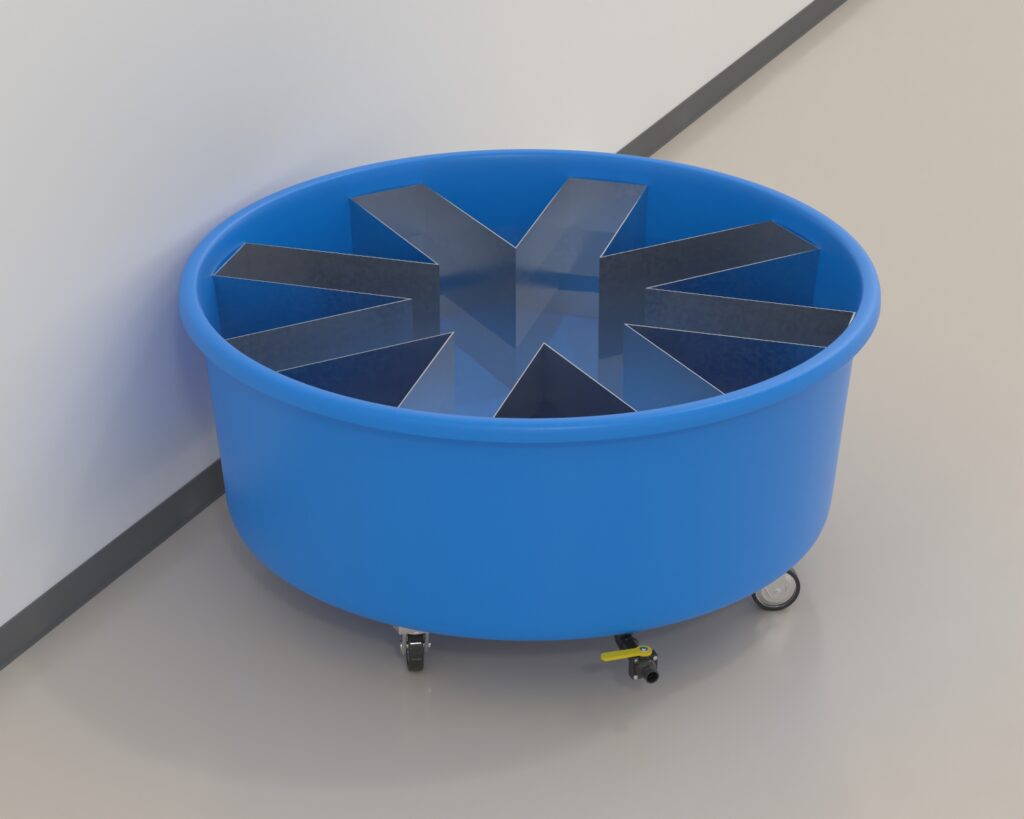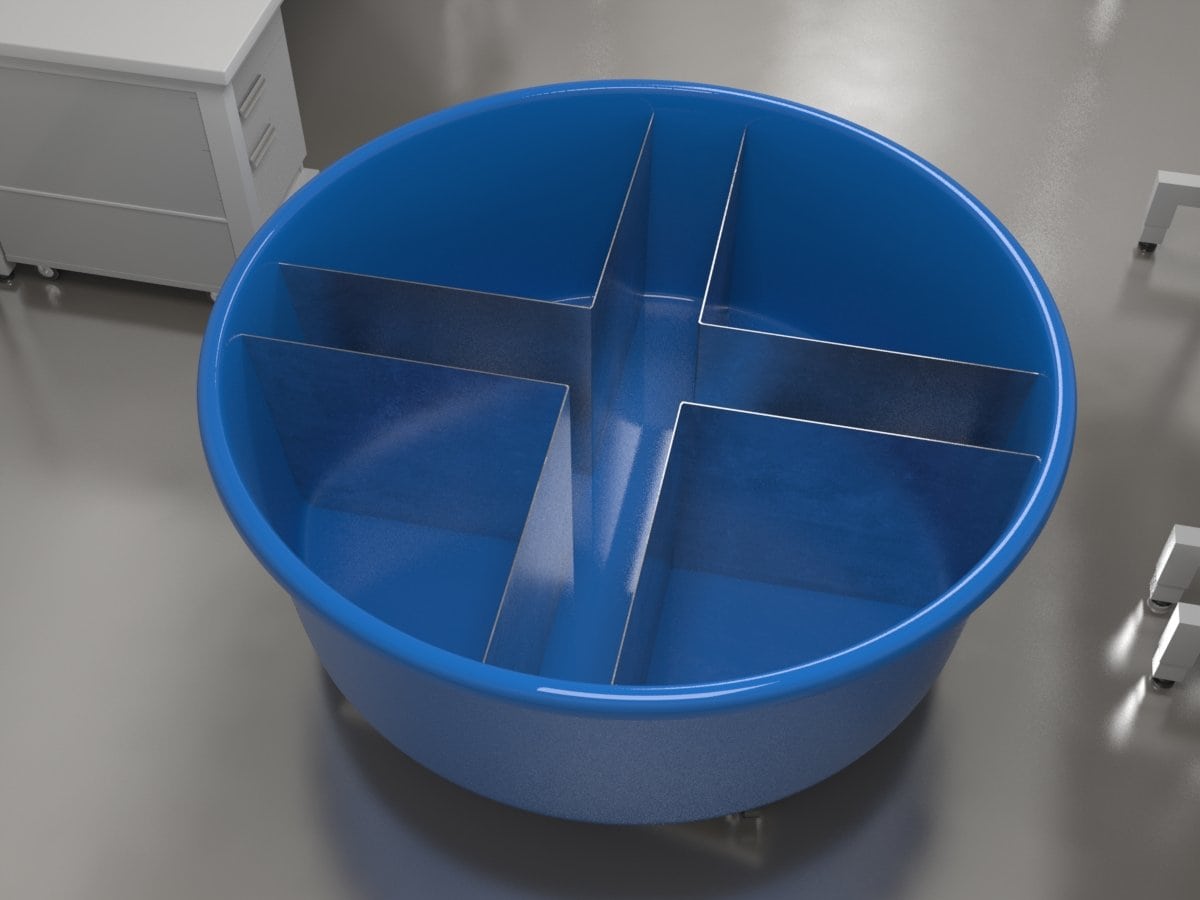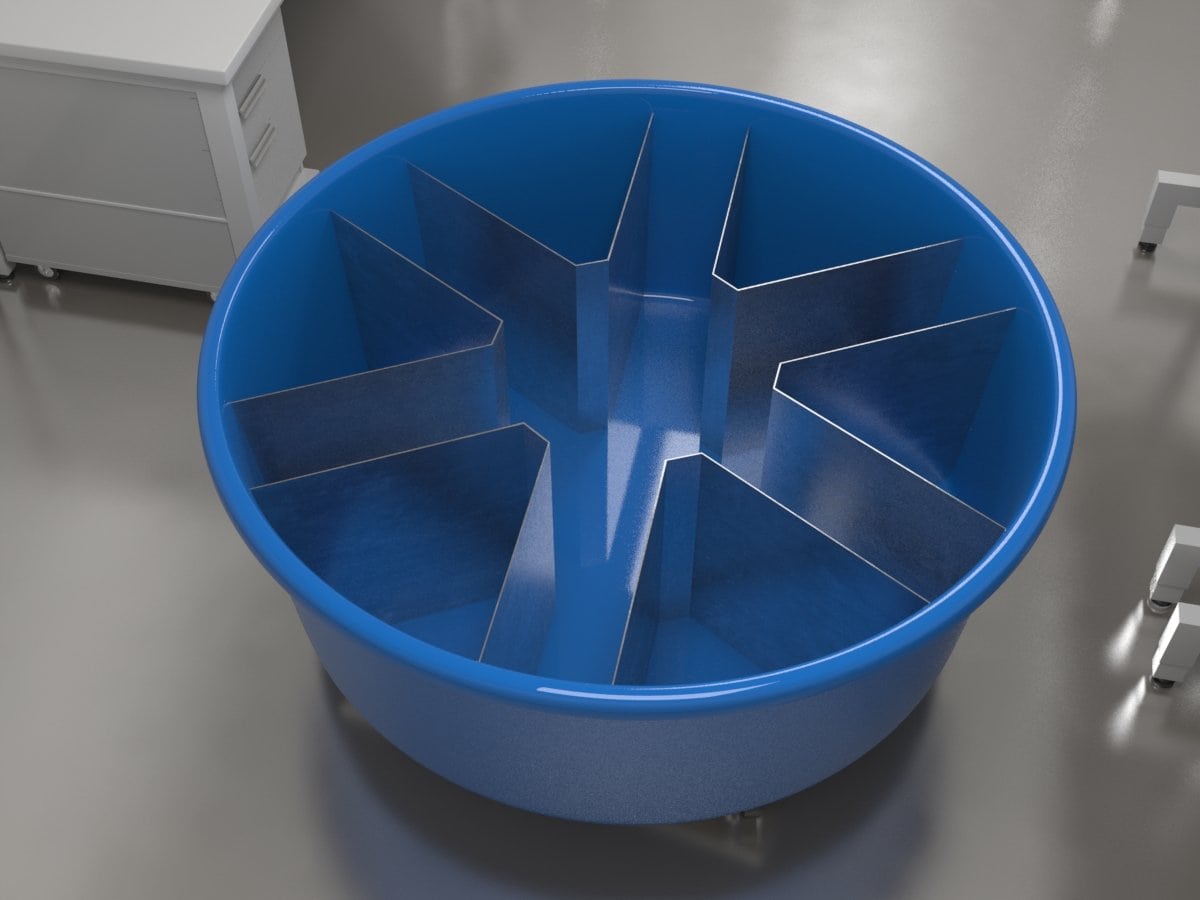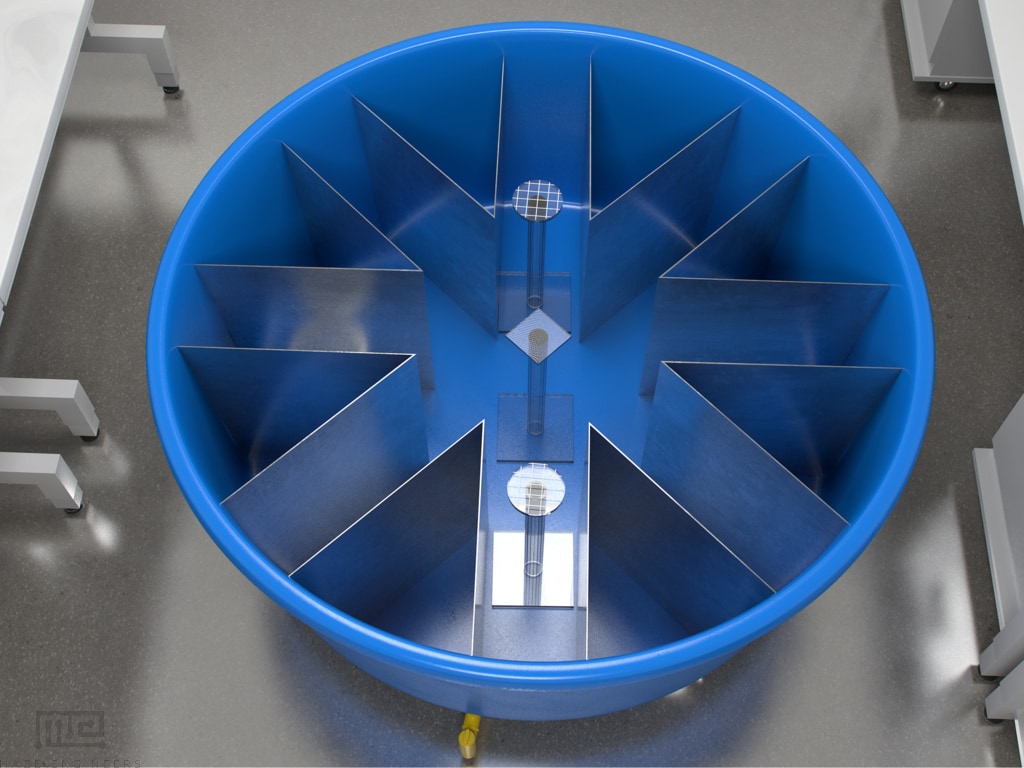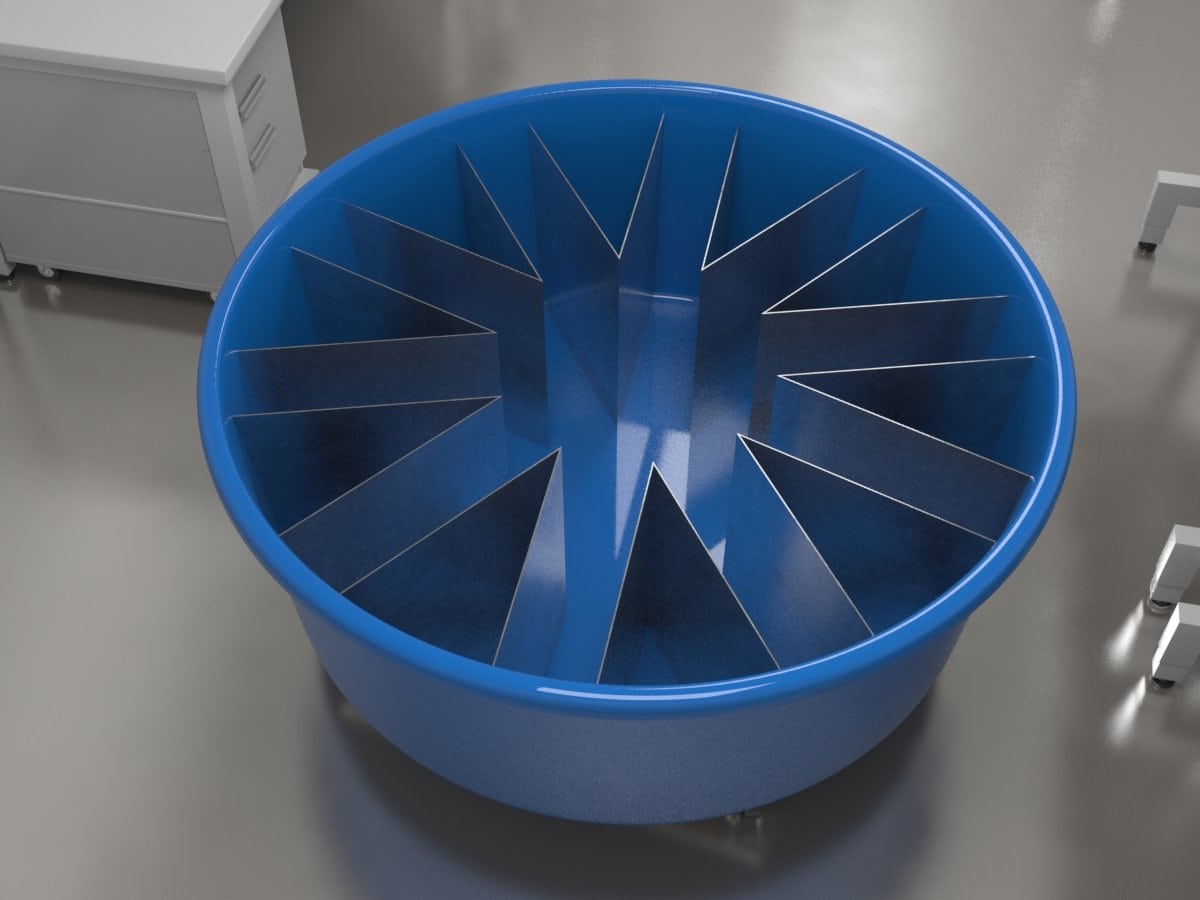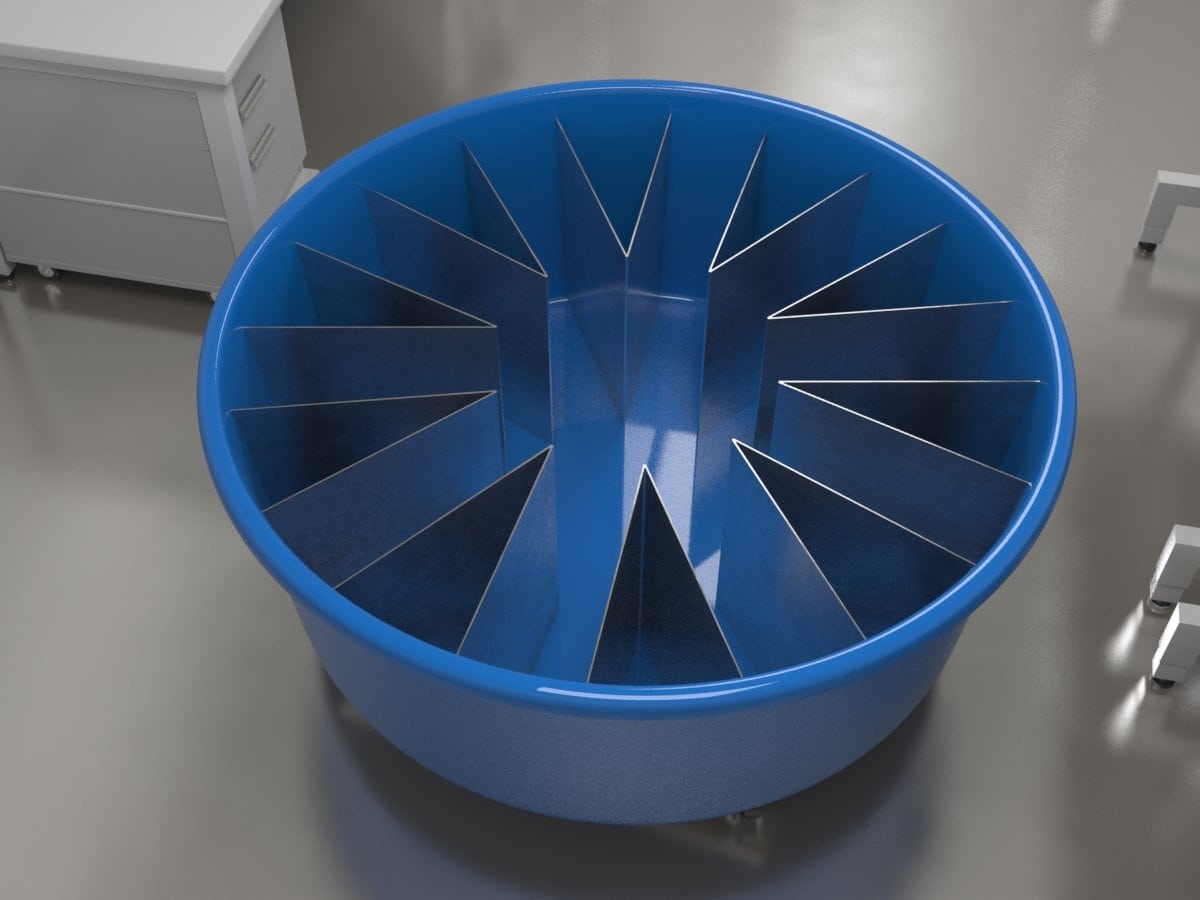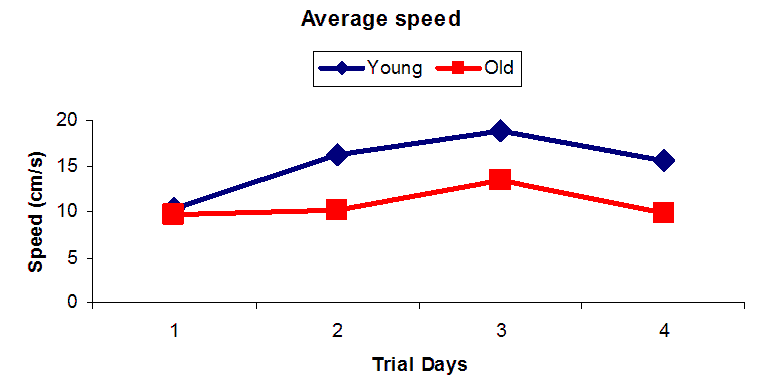Description
The Radial Arm Water Maze is made from the Morris water maze with radial arm inserts. The inserts add spatial complexity and combine the measures of the dry Radial Arm Maze with the rapid learning and aversive aspect of the Morris Water Maze. Multiple variations are possible from 4 arms to 12 arms. All inserts are made of high quality stainless steel for durable use, easy washing, and extremely stable experimental conditions in the setting of a full tank of fluid in the morris water maze. The MazeEngineers inserts are placed within the 4ft and 6 ft tanks.
Price & Dimensions
Radial Arm Insert (4 arm)
- Small 4Ft MWM
- Cost: $1200
- Large 6Ft MWM
- Cost: $1800
Radial Arm Insert (6 arm)
- Small 4Ft MWM
- Cost: $1500
- Large 6Ft MWM
- Cost: $1800
Radial Arm Insert (8 arm)
- Small 4Ft MWM
- Cost: $1900
- Large 6Ft MWM
- Cost: $3200
Radial Arm Insert (10 arm)
- Small 4Ft MWM
- Cost: $2000
- Large 6Ft MWM
- Cost: $3000
Radial Arm Insert (12 arm)
- Small 4Ft MWM
- Cost: $2400
- Large 6Ft MWM
- Cost: $3400
Are you an academic scientist and creator?
Learn how your lab can tech transfer this and similar devices from your lab to industry.
Documentation
Introduction
The Morris Water Maze was developed by Richard G. Morris in 1984 and has since become a widely used apparatus in studies of spatial memory and learning. Over the course of time, the apparatus has seen many adaptations and modifications to meet the specificity of different investigations. One such modification is the Radial Arm Inserts.
Starting in the late 90’s the Radial Arm Inserts were used in the Water Maze to investigate learning and memory performance in neurodegenerative disorders (such as Alzheimer’s), models of aging (Shukitt-Hale et al., 2004), drug testing (Shear et al., 1998) and even predator exposure (Diamond et al., 1998). The inserts add spatial complexity and combine the measures of the dry Radial Arm Maze with the rapid learning and aversive aspect of the Morris Water Maze.
The inserts can have arms ranging from 4 to 12 and are usually made of aluminum. The inserts are placed within a pool containing water that sufficiently hides the escape platforms. The Radial Arm Water Maze (RAWM) is used for both working memory and reference memory tasks.
Apparatus and Equipment
The apparatus consists of a pool having an internal diameter of approximately 0.9 to 1.2 m. The pool has a depth of at least 23 to 25 cm. The inserts can be either metal or plastic and are identical in dimensions. The inserts are usually 20 to 30 cm high and have a length of about 60 to 75 cm. The arms are arranged such that the passages created are equally spaced; for a 6-arm maze, the angle of separation would be 60 degrees. The central area is approximately 36 to 40 cm in diameter. The passage widths range between 20 to 25 cm, and the escape platforms are of diameter 10 cm.
Training Protocol
The pool is filled with water approximately 10 cm from the top. The inserts are placed within the pool such that the water level is 6 cm under the height of the arms to avoid the subject from climbing over. Next, the escape platforms are positioned in the arms, such that the hidden platform is just covered with approximately 0.5 cm water and the visible platform is not covered.
The subject is either placed in one of the arms of RAWM that does not contain the escape platform, facing the central area or in the central area of the RAWM. Each of the session lasts for at least 1 minute. In case, the subject fails to reach the escape platform after the session time has expired, it is gently guided to swim towards the platform. Regardless of whether the subject is guided to the escape platform or not, it is allowed 10 to 15 seconds on the escape platform before it is removed from the RAWM, towel dried and placed back in its housing under a heat source. The tasks are carried out over at least 2 days, with a total of 15 trials spaced over 3 hours.
The entire setup is well-lit, and the water temperature is maintained throughout the session. It is also ensured that the water is cleaned of any debris left behind by the subject. Each arm is labeled for easy identification. Although the experiment is easy to track and record manually, a tracking and video software, such as the Noldus Ethovision XT can also be used to assist in the scoring.
Evaluation of the effect of chronic administration of quinolinic acid on spatial learning
The RAWM used consists of retractable platforms. Surgically treated subjects are placed on the central platform under a Plexiglas cylinder for 10 seconds after which the cylinder is raised, and the central platform lowered forcing the subject to locate the escape platforms under each goal arm. On finding the platform, the subject is allowed 10 seconds rest period after which the escape platform is retracted for the remainder of the trial. The subject is allowed to explore freely until it has found the remaining platforms or until 3 minutes have passed. The subjects are tested over 21 days, on a 4 trial per day basis. (Shear et al., 1998).
Evaluation of the effect of predator exposure on spatial working memory
A 6-arm RAWM is used to investigate the effects of predator exposure on performance of subjects trained on the RAWM. The location of the escape platform is kept the same in a day and is changed across test days. The subjects learn the location of the escape platform during the acquisition trial after which they are removed from the maze for a 30-minute delay period. During this delay period, the subject is placed either in its housing (safe space) or near a predator (unsafe space) (in this experiment the rats are placed close to cats). After the delay period, the subjects are placed back into the maze for a retention trial (Diamond et al., 1999).
Evaluation of the effect of age on spatial learning and memory
Two age groups (young: 6 months; old: 21 months) of rats are used to determine the effect of age on spatial learning and memory in a RAWM task. The subjects are placed in one of the 7 start arms facing the wall. Each subject is given 120 seconds to find the escape platform. On finding the platform, the subject is allowed to rest on it for 15 seconds. The position of the escape platform is maintained for the first 3 days and changed on the 4th day. RAWM testing is performed over 4 days, five trials/day with a 30-minute inter-trial interval (Shukitt-Hale et al., 2004).
Sample Data
The RAWM combines the benefits of both the Radial Arm Maze and Morris Water Maze. The following parameters can be observed and recorded during each trial on the RAWM:
- Reference memory errors: Initial entry into the arms that do not contain the escape platform.
- Working memory errors: Entries into arms that were already visited.
- Escape latency: Time taken to reach the escape platform.
- Speed: The velocity with which the subject swims in the RAWM to find the escape platform.
Graphs below allow easy visualization of the observable factors and comparisons.
The below graph depicts the sample data of errors committed by the subjects when they are tested on a retention trial after the exposure to a predator (Diamond et al., 1999).
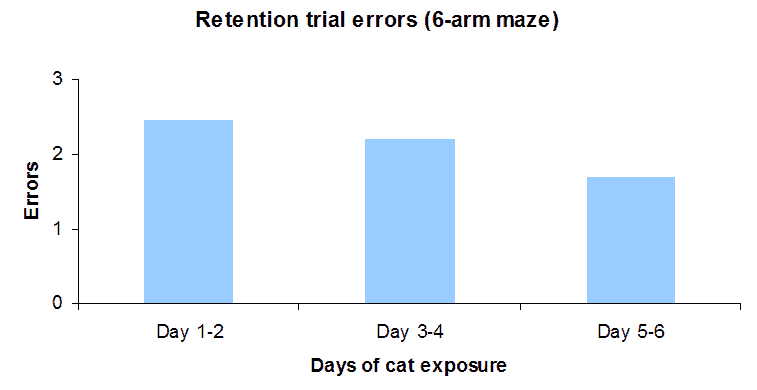
Strengths & Limitations
Strengths
The Radial Arm Water Maze combines the best of the dry Radial Arm Maze and the Morris Water Maze task. The water provides an aversive element which compels the subject to explore the maze for an escape platform. By introducing the radial arm inserts, we can add spatial complexity to the rapid learning water task. The RAWM combines the measure of the RAM task and thus makes data collection a straightforward task. Also, the RAWM eliminates the need for food deprivation or footshock as seen with other tasks. The task is easily adaptable to varying needs of investigations related to spatial learning and memory.
Limitations
As with every behavioral task, the subjects own behavioral response, and mental stability plays an important role. The subject’s ability to swim can also impact the results. It is important that the subjects are not overworked and inter-trial intervals are maintained to ensure adequate results.
Summary and Key Points
- The RAWM is hybrid maze combining elements of the Radial Arm Maze and the Morris Water Maze.
- The task takes advantage of the aversive nature of the water in motivating the subject to explore.
- The RAM aspect allows easy measuring of parameters.
- The hybrid maze adds spatial complexity to the rapid learning water maze task.
- The number of maze arms can be varied from anywhere between 4 to 12 arms, as required by the investigation.
- The task reliably tests working memory and reference memory.
- Unlike other tasks, the RAWM does not require food deprivation or foot shock.
References
Alamed J, Wilcock DM, Diamond DM, Gordon MN, Morgan D. Two-day radial-arm water maze learning and memory task; robust resolution of amyloid-related memory deficits in transgenic mice. Nat Protoc. 2006;1(4):1671-9.
Shear DA, Dong J, Haik-Creguer KL, Bazzett TJ, Albin RL, Dunbar GL. Chronic administration of quinolinic acid in the rat striatum causes spatial learning deficits in a radial arm water maze task. Exp Neurol. 1998 Apr;150(2):305-11.
Diamond DM, Park CR, Heman KL, Rose GM. Exposing rats to a predator impairs spatial working memory in the radial arm water maze. Hippocampus. 1999;9(5):542-52.
Shukitt-Hale B, McEwen JJ, Szprengiel A, Joseph JA. Effect of age on the radial arm water maze-a test of spatial learning and memory. Neurobiol Aging. 2004 Feb;25(2):223-9.

